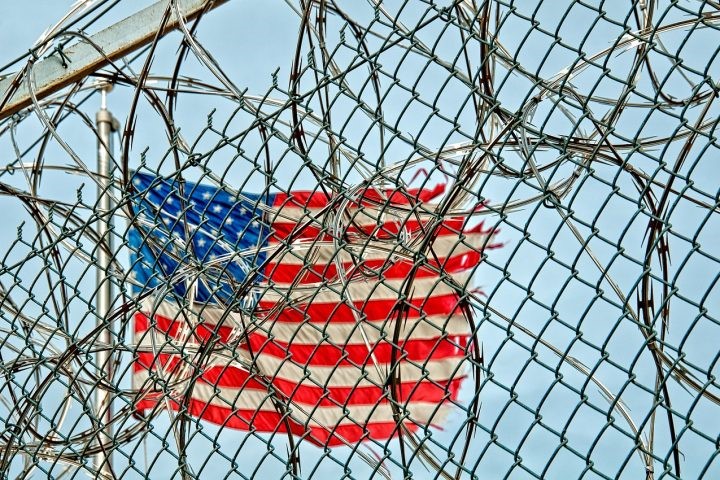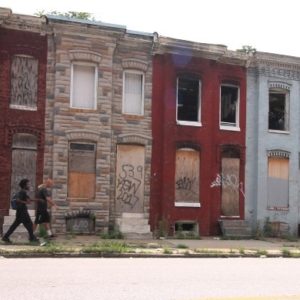
Antonio Coffield- The Maryland Justice Reinvestment Act: A Tactical Innovation to Changing the Pipeline to Prison Ecosystem
The Maryland Justice Reinvestment Act was designed to address challenges in the Maryland criminal justice system, to identify areas of policy improvement that reduce incarceration and cut costs, and to find alternative strategies to keep formerly incarcerated people in their communities. Spending 1.3 billion and annually locking up more than 20,000 mostly people of color, Maryland’s ineffective prison system must reinvest its resources into new and innovative strategies to fix the problem and provide better opportunities to those qualified individuals who have repaid their debt and are unable to obtain suitable employment due to limited resources and economic barriers. Also, the Justice Reinvestment Act must empower people to fix the problems in their neighborhoods, which is a critical factor blocking people from prosperity. The argument is that money which has been spent on the maintenance of prisons could instead be used for community upliftment and for training programs where people re-entering the workforce could learn employable skills so that they can provide more effectively for their families. This is why it is important that legislation be amended to drastically reduce prison populations so that a large portion of the correctional budget can be reinvested into Baltimore communities.
Making a way
Other states have already re-evaluated their correctional systems, and they have decided upon groundbreaking reforms that have led to considerable savings by merely reducing the number of inmates in state prisons. That money is then able to be reinvested in ways that ensure people have alternative opportunities to pursue career success and not return to prison. Many of the prison systems are outdated and fed by the broken legislative system that incarcerates far too many poor and minority inmates. Those ineffective systems absorb millions of dollars that must be better spent investing money back into struggling communities, creating environments where people can rebuild their own communities and have a fresh start at becoming successful. The long-term benefits of community upliftment far outweigh the doubtful benefits derived from so-called rehabilitated or reconditioned inmates. Our unjust prison system is broken, and therefore the likelihood of something good emerging from that system is remote. On the other hand, reducing prison intake and providing community economic programming will force leaders to take more responsibility and ultimately disrupt the current ineffectual ecosystem.
Taking responsibility
As the state of Maryland looks at ways to uplift and strengthen the natural fiber of its cities, it must think innovatively when investing recovered funds back into Baltimore communities. By forcefully monitoring and making shifts in unfair and unjust policies, opportunities to reduce crime in cities can be a viable solution for many of the most vulnerable communities. Every attempt should be made to change policies and appoint responsible leaders, those with impeccable morals and known for their service to disrupt broken and discriminatory systems. The courts of Baltimore should do everything in their ability to implement the recommendations of the Justice Reinvestment Act. Participation by the courts in itself will be irrefutable evidence that drastic change is coming to the city of Baltimore, and once people start to understand the community benefits, change will be embraced. The strategy behind JRA is that investing the money saved on correctional services into communities will have a positive impact that results in not only drastically reduced crime rates but eventually the prison population.
Reality or a pipe dream
Thanks to data-driven analytical tools and research, these days there are statistics to prove that the current correctional ecosystem is not working and unfairly punishes mostly low-income black and brown men of color. In 2017, the Colorado Justice Reinvestment Crime Prevention Initiative was passed, primarily based on years of research and thorough analysis of their correctional systems. They are continually revising their program and even now are considering parole reforms. The benefits to communities are substantial and proven to have an immediate impact on criminal activities. It is all about budgeting properly and spending money where it can do the most good. However, it is imperative to have change leaders in place who have a genuine passion for real community service and who will ensure that available funds will reach the people for which it is intended.
Identifying needs
Proper allocation of funds is critical to ensuring maximum benefits to the most challenged communities. Well-informed commissions will have to be carefully selected to ensure they are dedicated to prioritizing reinvestment, guaranteeing that funds will be allocated where they are most needed. Savings from prison budgets have to be invested in disinvested communities to improve economic development, education, housing, job training, and drug treatment and address mental and physical health challenges. Many people have doubts about the best way to tackle this crisis, but the reality is that years of bad policies have created this broken system that continues to prey upon the poor and mentally ill. Leaving young people at the mercy of our brutal city streets has not allowed them to dream beyond the expectation of merely surviving. The price of incarcerations, the continuous hemorrhage of human capital, and the competing priorities for governmental funds is forcefully making legislators think more creatively about how to prioritize scarce resources better. For Baltimore, investing in innovative and responsible drug treatment programming is also a better way of using prison reallocation funds. Supporting measures to prevent and avoid infections, overdoses, people using impure products or becoming slaves to criminal organizations is an effective and impactful opportunity to promote change within communities. As showcased in other countries, maybe it is time for us as a powerful nation to rethink how we govern the illicit drug industry since responding to the aftermath by locking up users doesn’t seem to be slowing down or stopping the problem. If people are going to abuse substances, maybe legalization is another way of critically thinking about the problem. It would allow our society to stop disguising it as a war on drugs and allow law enforcement agencies to focus on more serious crimes as was the case before it was politically expedient to declare being tough on crime. It is, after all, the billion dollar a year prescription drug and alcohol industries that could provide immediate economic revitalization and tackle the many social problems in city neighborhoods.
Making well-informed decisions

It will be essential to interact with community leaders and to identify those community projects which will require immediate attention. It is vital to focus on those community projects that will ensure the best possible improvements in the community. When looking at the JRA objectively and when considering the results that have been obtained in other states, especially the savings as far as law enforcement is concerned and how those savings have been used to stimulate economic growth in troubled communities, it becomes clear that when there is less crime, there are also fewer victims, less time and money spent on law enforcement, and less time spent on costly legal procedures in a court of law. Many people do not realize what law enforcement and the incarceration of criminals cost. To keep one prisoner incarcerated for one year costs the taxpayer $46,000 in Maryland. Looking at that amount by itself does not tell the full story, but statistics show us that it is possible to provide nine people with employment training for $46,000. You can also provide 36 families with two-room apartments for one month.
Following established guidelines
The JRA is more than a pipe dream, it is a scientifically proven concept, and one way to accomplish its objectives is to work through the Local Government Justice Reinvestment Commission that was established in SB 1005 to represent each county in advising the JROB on various matters. The purpose of this commission is to make recommendations regarding grants to local governments, and they are also responsible for putting measures in place that can gauge the effectiveness of those grants. Statistics indicate that inmates are increasingly older individuals of which the majority is black. The age factor is important because statistics tell us that it costs more to incarcerate old people compared to young ones because they are significantly more likely to have health problems. These older prisoners are less likely to turn to crime because they are merely getting too old unless they find themselves in a desperate situation. With the implementation of the JRA, such a dire situation is less likely to be a factor.
Huge savings
There can be no doubt based on statistics that were made available in other states that Maryland has a golden opportunity to save millions of taxpayer dollars by merely implementing the recommendations of the JRCC and SB 1005 and to immediately take a fresh look at critical issues such as medical and geriatric parole. Many people, especially law enforcement, policymakers, and others, consider the JRA to be a landmark piece of criminal justice legislation that has the potential to transform the justice system into something far more effective and fairer with greater protections for the public which it is supposed to serve. It will also be better prepared to manage the people within the correctional system releasing resources for other policies and programs that can further enrich lives.
The sad reality
Does Baltimore have access to the improved JRA and everything it represents? Yes, under US law the legislation has been approved and passed; however, since its implementation there are no statistics available to gauge its impact on the community. Unverified sources seem to suggest that implementation of JRA and everything it represents has been less than adequate and there are no proper measures or standards in place to provide accurate feedback, and therefore policymakers and the public have no way of knowing whether this sophisticated piece of legislation is accomplishing its objectives. This is a sad state of affairs, and it will not be unfair to reasonably expect that there will be an effort on the part of policymakers to evaluate the performance of JRA and to ensure that the legislation has been adequately implemented. Measures should be put in place to calculate all savings and to determine how reinvestments will be handled. It is crucial that data is collected as was done in other states and such data should be shared among all criminal justice agencies so that the effectiveness and the benefits of JRA can be adequately measured.


